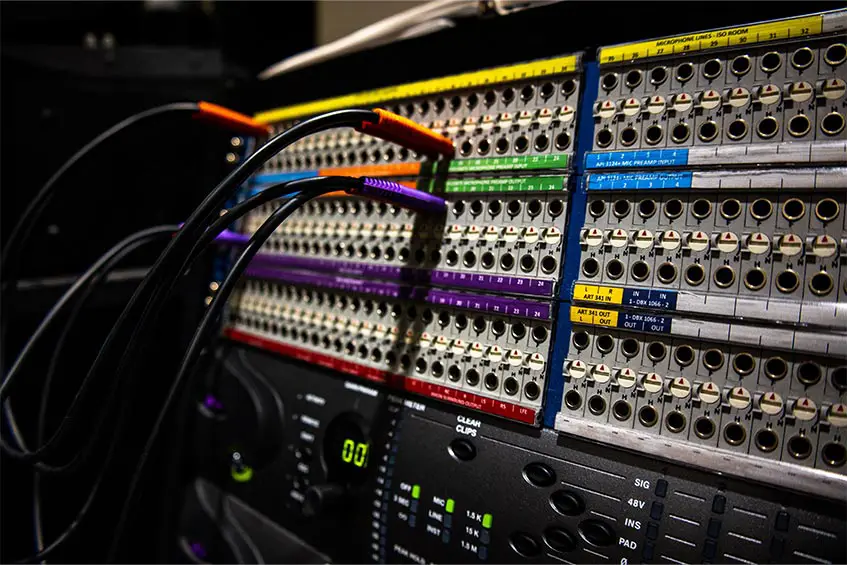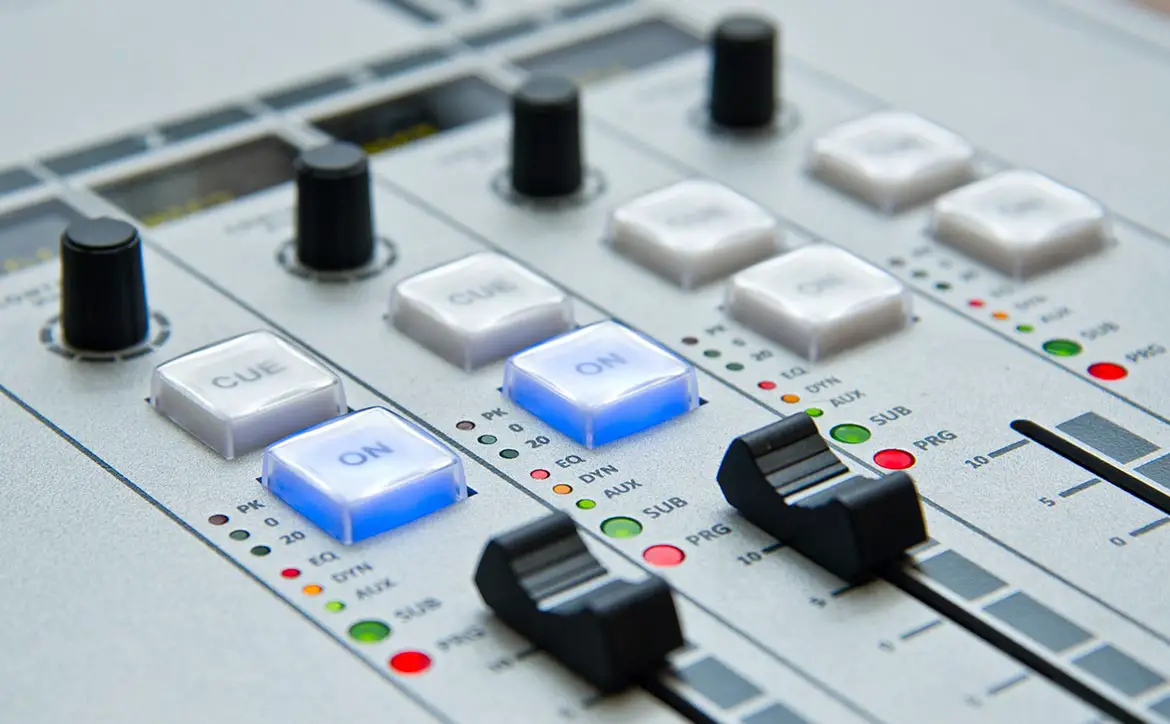Guest editorial by Bradford Swanson, VP of Creative Partnerships at Nomono.
Over the past few years, the consumption of podcasts has skyrocketed. In 2020, 100 million people listened to at least one podcast a month, and this number is estimated to grow to 125 million through 2022.
Estimated reading time: 8 minutes
As a result, marketers have begun spending more time and money than ever before on advertising within the medium. In fact, the Interactive Advertising Bureau predicts that podcast advertising will grow as much in the next two years as it did in the past decade. As the demand from listeners grows, so does the number of podcasts being created.
This surge in popularity coincides with the onset of the pandemic and the way it has impacted podcast production. Gone are the days when recording studios were required and guests had to travel from out of town for an interview. Rapid advancements in technology have now allowed production teams to work collaboratively from home. This new level of convenience and more widely accessible tools have allowed more people than ever to start podcasting.
Currently, there are over 720,000 active podcasts, signaling growth and diversity of content within the landscape, but also increased competition for the attention of advertisers and listeners. So, how can creators stand out in this highly saturated podcasting landscape? Here are some ideas:
Level-up your audio knowledge
Just as blogs didn’t suddenly make everyone a great writer, the democratization of podcasting tools doesn’t make everyone an expert in producing great sounding audio content. Setting aside any technology, equipment, or software, it’s the subject matter and storytelling that are critical to connecting with people. It doesn’t matter how advanced or expensive your equipment is, if the content isn’t good, it’s hard to imagine a listener sticking around for long.
However, poor audio quality can diminish the impact of a great conversation, interview, or story, and turn away guests and advertisers who are looking for a positive association with a professional podcast.
To be clear, this doesn’t mean that you need to run out and buy more equipment or software. To the contrary, you may well be able to improve the quality of your audio by taking time to learn more about the craft and the tools you already have. There are some outstanding free materials available to all. There are a number of reliable resources like transom.org, training.npr.org, Air Media, and Podcast Movement University that are loaded with useful information to help you raise your audio competence.
Investing this time to learn, and finding ways to simplify your work while maintaining quality—through simpler equipment setups and a greater understanding of how to use it—gives you more time to focus on what really matters: the content. The less time you spend running cables, checking levels, moving files around, cleaning up audio tracks, editing, and “fixing it in post,” the more time you have to prepare for interviews and tell a compelling story, or to work on a great mix, innovative sound design, or creative ways to reach new audiences.
Streamline your workflows for maximum efficiency
For many of the narrative, documentary-style podcasts we enjoy, the journey from capturing a great conversation to editing it into a finished podcast can be a long one. Interviews might live on various SD cards and recorders, which then need to be transferred, organized, backed up safely, and accessible by all your collaborators. Then someone has to log all that material and figure out what’s usable and how it all fits together. Along the way, they may find audio problems that need to be solved, like unwanted background noise, poor microphone placement, distortion, interference, or dropouts. And once your collaborators get involved, the emails start flying—sharing notes about the recording, suggesting time-stamped sections for inclusion, and generally collaborating asynchronously until the editor can pull together an initial draft, which triggers another round of email feedback.

Anything that can create efficiency within the editorial process can give podcasters time to be more creative and focus on better content. It’s exciting to imagine a future where field recorders could stream content wirelessly to the cloud, and some well-trained AI could automatically organize the files, tag them with metadata and clean up the audio before we even start editing. This could eliminate some of the most arduous parts of podcast production. A cloud resource like this could also serve as an online collaboration platform for backing up materials and connecting podcast teams and their feedback in a single location. When we look at some of the innovative companies who are building cloud platforms specifically for podcasters, like Descript, Nomono, Riverside.fm or Podbean, it’s clear that workflows like these could be coming soon.
In the meantime, take a minute to consider your production workflow. What parts of the editorial process are most onerous? Are there improvements you can make to give you more time for the parts of podcasting that you love to do? If you’re spending three hours trying to tweak the audio for a 30-minute podcast episode, you might be better served by hiring an engineer to help you or trying to capture cleaner recordings at the beginning, so you’re not spending so much time in post-production.
Start interviewing people in-person again
Conferencing and other types of online solutions made it possible to keep podcasts going during the pandemic, but there’s really nothing like recording conversations with everyone together in-person, where people can feed off each other, react, and have a very natural conversation. But the idea of being locked in an air-locked studio with three other people might not be practical for a while. How do you do it safely with continuing health restrictions?
One option could be to gather outdoors or in a large room where you can space each guest out safely. Each of these situations have their own challenges, between extraneous noise and acoustic issues, to the complexity of running long cables and carting stands and equipment to these locations. These could be great applications for wireless lavalier microphones, which give you more flexibility to position participants safely apart. What’s more, the participants would be freer to move around naturally while maintaining consistent mic placement. You could even imagine your guests sitting around a campfire or walking through a park while you conduct your interview. Lavaliers and wireless mics have traditionally meant complexity and compromises in sound quality, but hopefully the technology will evolve in a way that allows for compact, mobile, wireless podcasting kits that will get us all into the field faster and safer.
Capture the ambiance of your environment
As podcasters get out more, they’ll become reacquainted with controlling unwanted background noise or suppressing it in post-production. Worrying about sirens passing was less important when recording online with headsets, from home studios.
Technology is making it possible to automate the removal of unwanted background noise without extracting all the ambience from the setting. Leveraging tools like artificial intelligence and machine learning, background noise can be separated from foreground dialogue and balanced in post-production. If we can find ways to simplify this type of processing and make it accessible to more people, the podcast professional can focus on the content rather than having to learn how to use time-intensive post-production features.
Additionally, podcasters have creative opportunities for using ambient sound to immerse their listeners in the storytelling and environment. Instead of removing all the background noise, consider what you want to leave in your recording to establish a sense of place or a mood, the same way a photographer or videographer considers the entire scene when capturing a subject.
This means being intentional about capturing ambient sound or “scene tape” for your podcasts, even if you don’t use it all later. In addition to the mics you use to capture each guest, try to use a separate mic or recorder to capture the ambient sound of the environment. That way you have it and can paint that rich, immersive audio canvas you’re looking to create to bring your listeners inside the story.
Prepare to embrace a spatial audio future
Having worked to capture high-quality audio, including ambient sound, and craft thoughtful stories from all the content you’ve gathered, it’s worth thinking about how you can provide new listening experiences through the evolutions in spatial audio technology. If you’ve recorded multiple tracks of your podcast subjects, plus separate tracks for sound design, ambience, music and effects, you have the building blocks for a spatial audio production.
We’ve seen producers like iHeart Radio and QCODE using immersive audio to help their listeners feel surrounded by the storytelling. But to truly embrace the spatial audio future, podcasters will want to learn to capture spatial audio recordings from the outset, leveraging flexible technologies like Ambisonics microphones in the field. These tools capture a 360-degree recording of the environment in a format that can be manipulated later and then used in whatever supporting platform you choose whenever you’re ready to embrace spatial audio, whether that’s a binaural stereo mix today, or a Dolby Atmos mix two years from now. Even if we’re not distributing spatial audio podcasts today, you’ll still be able to have rich, high-quality, stereo podcast audio and be ready to redistribute in spatial audio down the road.
At the end of the day, the best podcasts will always come from the best storytellers, regardless of what technology they’re using. But by embracing new technological innovation while keeping the story at the focus of the creative process, creators are sure to produce the best quality content possible.
Bradford Swanson is the VP of Creative Partnerships at Nomono. He has also taught media production at Tufts University and the University of Massachusetts, Lowell, and serves on multiple committees within the Audio Engineering Society.
Last Updated on March 21, 2022.










